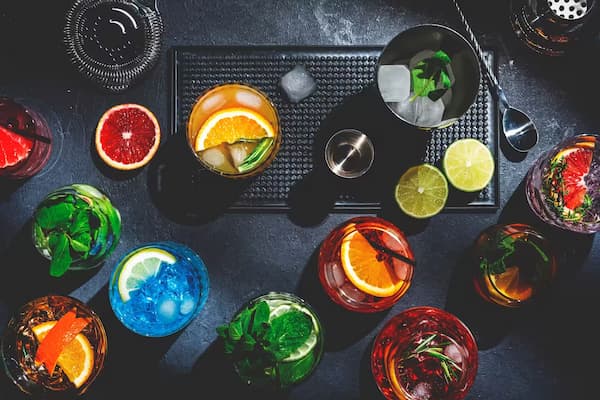Aperol
With Aperol you can make
Mucho Grande
Milano Torino
Aperol Spritz
Eleven O'Six
Banderilla
Garibaldi
Lovelight
Enzoni
Old Friend
Naked & Famous
Aperol Sour
We've got 28 cocktails that can be made with Aperol.
Find out what to make with Aperol
Q&A
What is the history and origin of Aperol?
Aperol was first introduced in 1919 by the Barbieri brothers in Padua, Italy, marking its creation amid a thriving Italian culture of aperitivo—a time-honored tradition for relaxation and socializing before dinner. Aperol's unique blend of sweet and bitter oranges, rhubarb, and an assortment of herbs and roots gives it a distinctive flavor and color, making it a beloved ingredient for various cocktails. Over the years, it has grown in popularity, not only in Italy but also internationally, and is now a staple in many bars around the world, largely famous for its role in the iconic Aperol Spritz cocktail.
What can I use as a substitute for Aperol in a cocktail?
If you're looking to substitute Aperol in a cocktail, Campari is a popular choice due to its similar bitter and herbal flavor profile, though it's slightly more bitter and has a higher alcohol content. For a less alcoholic option, Select Aperitivo or Cappelletti can be used, both offering a comparable bittersweet taste. Bear in mind, each alternative may impart a slightly different color and bitterness level to your drink, so adjustments to the recipe might be necessary to match the desired taste.
How do you properly incorporate Aperol into cocktails?
Aperol can be easily incorporated into cocktails either by stirring or shaking, depending on the cocktail's other components. For light and refreshing drinks like the Aperol Spritz, gently stir Aperol with Prosecco and soda water over ice to maintain the carbonation. For cocktails that include a mix of spirits and ingredients, shaking Aperol with the other components can help to integrate flavors fully. When using Aperol in cocktails, it's important to balance its bittersweet flavor with the other ingredients to achieve a harmonious taste.
What are some popular cocktails that feature Aperol?
The Aperol Spritz is undoubtedly the most famous cocktail that features Aperol, known for its refreshing and light qualities. Another classic is the Negroni, where Aperol can be used instead of Campari for a slightly lighter and sweeter variation. The Aperol Sour is a delightful twist on the traditional sour, adding a bittersweet complexity. For a sparkling and fruity option, mixing Aperol with champagne creates a vibrant and elegant cocktail. Each drink showcases Aperol's versatility in creating a range of flavors from sweet and citrusy to bitter and refreshing.
Are there any non-alcoholic alternatives to Aperol for mocktails?
Yes, for a non-alcoholic version of Aperol, you can use Aperol-flavored syrups or non-alcoholic aperitif alternatives that mimic its bittersweet and herbal profile. Brands like Lyre's offer an Italian Orange spirit that closely replicates the taste of traditional Aperol without the alcohol content. You can mix these alternatives with sparkling water, a splash of orange juice, and garnish with an orange slice to create a refreshing non-alcoholic Aperol Spritz mocktail that enjoys the characteristic flavors of Aperol without the alcohol.
Ingredients like Aperol
Other Specialities
How it works
Easily create your bar from the ingredients you have at home, and we'll show you what you can make with the ingredients you have to hand.
Once you've added this ingredient head to your My bar page and fill up everything else you have.
We'll also show you cocktails that can make by substituting what you have for one of the ingredients you don't, riffing on the original. Now go forth and create something delicious!




















